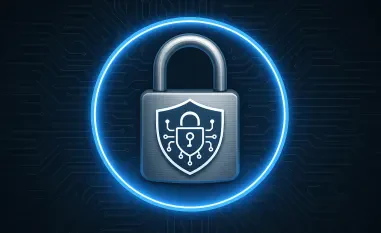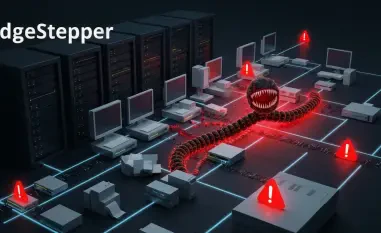What happens when the backbone of global communication becomes a prime target for cybercriminals? Picture a multinational telecom giant, responsible for connecting millions, suddenly crippled by a ransomware attack, with sensitive data held hostage on the dark web. This isn’t a distant possibility—it’s a chilling reality for the telecommunications industry today. The recent breach at Colt Technology Services, where a million documents were allegedly stolen, serves as a stark reminder of the vulnerabilities lurking within a sector that powers modern life.
A Shocking Breach Awakens the Industry
The cyber underworld struck a devastating blow when Colt Technology Services, a UK-based telecom powerhouse, confirmed a data breach orchestrated by the ransomware group WarLock. On August 14, the company detected unauthorized access and swiftly took systems offline, causing temporary unavailability of key support platforms like Colt Online. This incident wasn’t just a blip—it exposed the fragility of even the most established players in an industry that thrives on seamless connectivity.
While Colt reassured clients that customer infrastructure remained untouched, the breach still compromised internal systems, potentially leaking sensitive data. WarLock’s brazen claim of stealing one million documents, now up for auction on a Tor-based leak site, underscores the audacity of modern cybercriminals. This event has sent shockwaves through the sector, prompting urgent questions about how prepared telecom firms truly are for such threats.
Why Telecoms Are Prime Targets
Telecommunications companies aren’t merely service providers; they form the critical infrastructure that keeps nations and economies running. Handling vast amounts of personal and operational data, from customer records to network configurations, makes them irresistible to ransomware groups seeking high-value payouts. A single breach can disrupt communications on a global scale, amplifying the leverage attackers hold over their targets.
The stakes are evident in cases beyond Colt, with WarLock claiming to have targeted France-based Orange as well. Though details of that breach remain unconfirmed, the pattern is clear: telecoms are in the crosshairs due to their pivotal role in society. The potential for chaos—whether through service outages or data leaks—positions these firms as lucrative prey for cyber gangs looking to exploit every vulnerability.
Dissecting the Ransomware Threat Landscape
The sophistication of ransomware attacks on telecoms reveals a multi-layered threat. Groups like WarLock don’t just infiltrate systems; they target isolated platforms, as seen with Colt’s compromised support services, proving that even segregated networks aren’t safe. This tactical precision allows attackers to extract valuable data without directly hitting customer-facing operations, yet the damage to trust and reputation remains profound.
Beyond individual breaches, the commodification of stolen information adds another layer of concern. The dark web auction of Colt’s alleged million documents highlights how data becomes a currency for profit, often at the expense of customer privacy. This trend isn’t isolated—industry-wide patterns show telecoms repeatedly targeted, with operational disruptions like system shutdowns becoming a necessary but costly defense mechanism.
Insights from the Cybersecurity Battleground
Experts in cybersecurity paint a grim picture of the challenges telecom firms face. One analyst, with deep knowledge of recent incidents, described the industry as “a goldmine for ransomware groups like WarLock, who exploit data for both financial gain and strategic leverage.” This perspective aligns with the reality that telecoms manage sprawling networks, making complete security a near-impossible feat without constant vigilance.
Colt’s response to the breach—acknowledging the incident while emphasizing that core customer systems were unaffected—illustrates the delicate balance between transparency and minimizing panic. Yet WarLock’s bold claims on their leak site, boasting of their haul, serve as a public taunt to the industry. These contrasting voices reveal a sector under relentless pressure, where every move is scrutinized by both clients and adversaries.
Building Stronger Defenses Against Cyber Threats
To counter the rising tide of ransomware, telecom firms must adopt a multi-pronged approach to security. System segmentation stands as a critical first step—isolating key infrastructure ensures that a breach in one area, like a support platform, doesn’t cascade into core operations. This strategy could limit the scope of damage, preserving essential services even under attack.
Investing in real-time threat detection tools is equally vital, enabling companies to identify intrusions before significant data loss occurs. Alongside this, employee training on recognizing phishing attempts and other common entry points for malware can close human-error gaps. Robust incident response plans, tested regularly, also ensure rapid recovery, reducing downtime as seen in Colt’s temporary service interruptions. Finally, industry-wide collaboration through shared threat intelligence can help telecoms anticipate and neutralize risks before they strike, fostering a collective shield against evolving cyber dangers.
Reflecting on a Crisis That Shook the Sector
Looking back, the ransomware attack on Colt Technology Services stood as a defining moment that exposed deep vulnerabilities within the telecommunications industry. It highlighted how even segregated systems could be penetrated, leaving sensitive data at risk of exploitation on the dark web. The incident, coupled with threats against other giants like Orange, painted a sobering picture of a sector under constant siege.
The path forward demanded more than reactive measures; it required a fundamental shift in how telecom firms approached cybersecurity. Prioritizing advanced monitoring, rigorous training, and collaborative defense strategies became non-negotiable steps to safeguard critical infrastructure. As the industry grappled with these lessons, the focus shifted toward building resilience, ensuring that connectivity—the lifeblood of modern society—remained unbroken in the face of cyber adversity.













